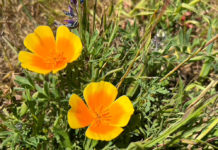There are vast benefits to composting, not only environmentally, but also personally within your home. Using compost in your home garden adds nitrogen, potassium and micro-nutrients such as manganese, iron and zinc. These additions strengthen the structure of your soil, retain water in plant structure, prevent erosion and are ideal for drainage.
There are two ways to go about composting, based on your available space. If you have limited or no outside space, you can use a specially designed bin for indoor use that can be purchased from a local garden store, hardware store, or even via the local paper want ads.
For those with outside space, select a dry area with shade that is close to a water source and dig out a desired space. Try a three-foot by three-foot by three-foot depth, or what every size you feel is adequate. Now it’s time to start creating your compost.
In selecting your compost, think of two categories: home and outside. The home category is food from your home, including fruits, vegetables, nut shells, coffee grounds and tea leaves, but excludes dairy products, meat or fish scraps and grease.
The outside category includes items from your yard, such as leaves, branches and yard clippings. Note: compost items should not be chemically treated. Make sure to cut large materials like banana peels and branches to aid in the breakdown process. Lastly, make sure to layer your compost, alternating between home items and outside items, and try to keep each layer similar in size.
Every two weeks or so, while tending to your compost, whether you are simply checking on it or adding to it, it is important to mix your compost. How can you tell if the compost is ready? That will depend on the material being composted and its environment. I suggest researching your material and the environment where you’ve composted to get a better understanding on your compost and the process.
Generally speaking, the appearance of compost that is ready will be crumbly and may be slimy in consistency, dark in color (like soil) and have an earthy smell. Now, you can use it to plant flowers, trees, vegetables and as top soil. It can also be used for putting in a new lawn, installing a new eco-friendly landscape, or simply used for rotating your vegetable garden.
There are many benefits to composting. It is known to regenerate soil by promoting production of micro-nutrients, which break down organic matter and in turn retain moisture and increase the content in the soil through a process called humus.
Given that 95 percent of our food comes from our soil, it is critical to consider soil quality. Compost can also clean up the contaminated soil by absorbing volatile organic compounds (like pesticides) that may be found in your soil.
Also, carbon released from farming heats up our Earth’s climate and melts polar ice caps, which is another reason composting is an important practice that contributes toward protecting our ecosystem. If all countries put 0.4 percent of their carbon back into their land, it would return 75 percent of all of Earth’s carbon back into the soil.
Other benefits of composting include preventing soil erosion, which is especially important if you live near creeks or storm water drains. The compost can slowly preserve the amount of sediment runoff that spills into our waterways, which drain into our rivers. This is imperative in protecting these waterways, as they are the ecosystem for our fish and other inhabitants living in rivers and oceans.
Composting and sustainability should be on the forefront of our minds. Composting is an incredibly versatile practice that supports erosion control and provides many benefits for gardening, our waterways and our ecosystem as a whole.









